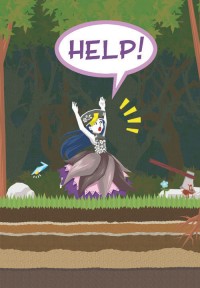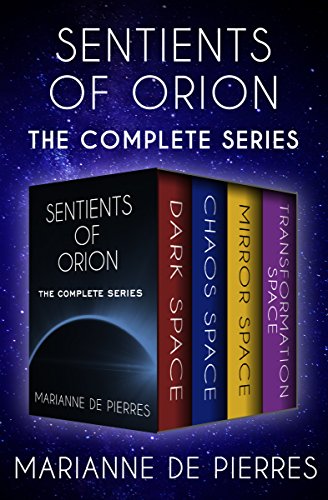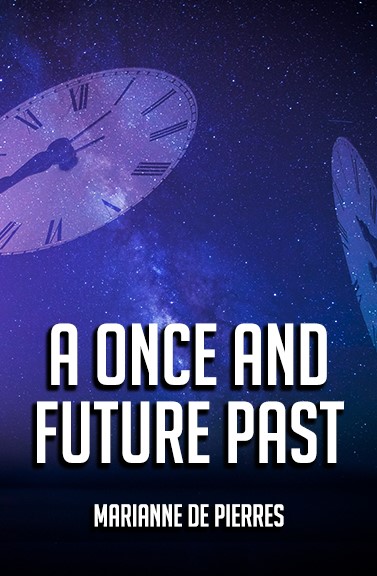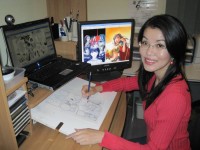 Queenie Chan was born in 1980 in Hong Kong, and migrated to Australia when she was six years old. In 2004, she began drawing a 3-volume mystery-horror series called “The Dreaming” for LA-based manga publisher TOKYOPOP. To date, it has been translated into multiple languages.
Queenie Chan was born in 1980 in Hong Kong, and migrated to Australia when she was six years old. In 2004, she began drawing a 3-volume mystery-horror series called “The Dreaming” for LA-based manga publisher TOKYOPOP. To date, it has been translated into multiple languages.
She has since collaborated on several single-volume graphic novels with best-selling author Dean Koontz. As prequels to his “Odd Thomas” series of novels, they are called “In Odd We Trust” and “Odd Is On Our Side”, the latter becoming #1 on the New York Times best-seller list the week it came out. A third book, “House of Odd”, is coming in April 2012. In 2009, she also provided art for the “Boys Book of Positive Quotations”, by best-selling inspirational author Steve Deger.
Currently, she is working on “Small Shen”, a prequel to Kylie Chan’s best-selling “White Tiger” fantasy series. Apart from her professional work, she also draws a number of online comic strips on her personal site: http://www.queeniechan.com/
1. What is it that appeals to you about manga over other forms of storytelling?
Manga is a very visual form of story-telling, and being a big fan of cinema, I found the cinematic nature of the pacing to be quite appealing. As a child, I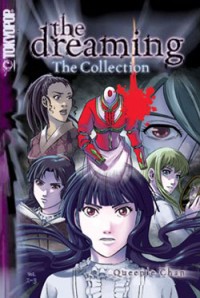 read a lot, watched a fair number of movies, and played a lot of video games… but as a teenager, it was really manga that captured my attention, and showed me that it’s a medium where anything is possible. You can take a blank piece of paper, draw anything on it, and it will be completely from your own imagination. The freedom and possibilities offered was very attractive.
read a lot, watched a fair number of movies, and played a lot of video games… but as a teenager, it was really manga that captured my attention, and showed me that it’s a medium where anything is possible. You can take a blank piece of paper, draw anything on it, and it will be completely from your own imagination. The freedom and possibilities offered was very attractive.
Being able to read a lot of translated manga in Chinese was also a blessing, because at the time, a lot of the work wasn’t yet available in English (and many still aren’t). Compared to mainstream American comics, manga offered a great deal of diversity in its subject matter, and I learned a fair amount about other walks of life that I otherwise wouldn’t have had an interest in. There was manga about surgery, about fire-fighting… and so on, and so forth. Again, the visual aspects of the medium made it easy for me to understand what was going on, moreso than if it was in prose.
2. What was it like working with TokyoPop on The Dreaming graphic novels?
“The Dreaming” was an unusual project for me, because I was rejected multiple times when I first submitted to TOKYOPOP. Eventually, they asked me to do a “haunted school” story. While I wasn’t too thrilled at that possibility at first, when I sat down and had a think about it, I realised that there is potential in this particular (narrow) genre. I wanted to do something that would showcase Australian culture, and therefore be appealing to anyone who isn’t from Australia (especially to Americans, which was the target market at the time). When I explained my idea to the editors at TOKYOPOP, they gave me their blessing, especially since one of them was a big fan of the “Picnic at Hanging Rock” movie from the 80s.
“The Dreaming” is only very loosely inspired by “Picnic at Hanging Rock”, but I like to mention it when I talk about the series’ influences. Perhaps because of the “foreign” nature of the story to the American editors, they largely left me alone to work on it. I had editors and copy-editors who helped me from time to time, but apart from that, I was given a great deal of freedom. I’m not sure how normal that is for a series from TOKYOPOP, but “The Dreaming” was quite successful, so I know that the story and the characters must have resonated with the readers, no matter where they’re from (and I got a fair amount of fanmail from it too!).
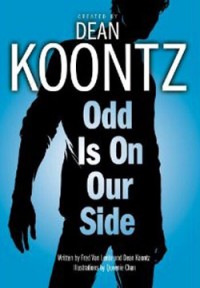 3. You’ve just finished the third manga adaptation of Dean Koontz’s Odd Thomas novels. Can you share some of that journey with us?
3. You’ve just finished the third manga adaptation of Dean Koontz’s Odd Thomas novels. Can you share some of that journey with us?
Firstly, the “Odd Thomas” graphic novels aren’t adaptations of the original novels. They are original, stand-alone stories, with the story summaries written by Dean Koontz, and a comic book writer hired to flesh the story out and turn it into a comic book script for me to draw from. They star the same cast of characters from the novels, which is why they’re popular. When I was doing “House of Odd” (book 3 of the series), the second book “Odd Is On Our Side” was a #1 best-selling graphic novel on the New York Times best-seller list. Hopefully the third book is as popular as the second book was. Certainly the development process was almost entirely the same, though the comic book writers were different.
“House of Odd” was adapted from Dean’s story summary by Landry Walker, and his writing style was different to that of Fred Van Lente (writer for “Odd Is On Our Side”, whereas I wrote the first manga “In Odd We Trust”). It was interesting to compare and contrast the two writers, but as the illustrator, my job is to tell the story in as best a way as it can be told, so I did just that. Sometimes this means not following the script, because while the story was complete when I received the script, Dean tends to go through the comic book script and sometimes rewrite the character’s lines in order to fit his vision more. This can make for some odd moments, so it’s my job to smooth over these situations and make sure that the pictures correspond with the dialogue.
Dean is very easy to work with, and he’s never had a problem with the way I interprete the script. So I must say that despite having to keep an eye on the dialogue VS. the panel descriptions at times, the overall experience was quite rewarding and not at all difficult.
4. Can you tell us about your next project with Kylie Chan?
Kylie has written a best-selling series of Chinese fantasy novels called “White Tiger” (the first book). When she approached me, I found the story setting quite appealing, which is why I became interested in doing the prequel for the series – called “Small Shen”. The fact that it’s a prequel gives me some space to do interesting things with it, especially since the prose already exists, and I’m working from what is literally a finished (though yet unpublished) book. I can’t give away any details at this time, but I can tell you that it won’t be a straight-forward graphic novel. It’ll be a blend of prose and comics, which for me, is quite fun to attempt.
The book is due to be completed in July next year, in time for a Christmas release. I believe both Kylie and me will talk more about it when the release date approaches. So far, she’s been very satisfied with how it’s going, so I hope everyone will like the final product.
5. What would you like to be doing in ten years?
Probably doing the same thing as I am now, or at least that’s what I hope. Given the way life tends to pan out, it’s hard to say what I’ll be doing in 5 year’s time, let alone 10 years. Technology has changed the entertainment landscape a lot, so I’ll be interested in seeing how distribution models will change over the next few years. Like it or not, these kinds of outside forces are really what shape an industry, so I will be keeping a close eye on how things go in that field.








